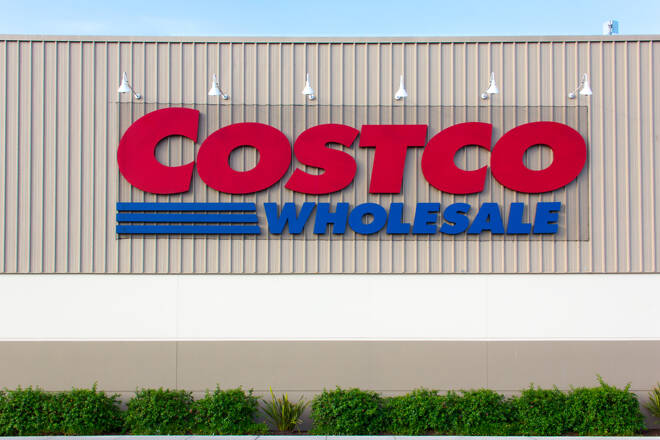Advertisement
Advertisement
Costco Falls Short of Earnings, Gap Shows Progress Despite Sales Decline
By:
Costco earnings fall short amid reduced consumer spending, while Gap reports losses but progresses with margin improvement and cost-cutting.
Highlights
- Costco’s earnings fall short due to reduced demand for non-essential items.
- Gap reports net losses but makes progress in improving margins.
- Both companies focus on cost-saving measures and improving gross margins.
Overview
Costco Wholesale Corp and Gap both faced challenges in their recent quarterly reports, reflecting the ongoing difficulties in the retail industry. Costco fell short of earnings expectations as consumers scaled back on non-essential spending amidst persistent inflation and economic uncertainties. The company’s focus on essential items like packaged food and groceries meant that consumers reduced their demand for higher-margin products such as home furnishings, jewelry, toys, and electronics. This posed a challenge for all-in-one retailers like Costco, as they rely on a diverse range of products to drive sales.
Costco’s Q3 Profit Falls Short, Membership Revenue Shows Promise
For the third quarter, Costco reported a profit of $2.93 per share, failing to meet analysts’ expectations of $3.29. The company’s total revenue also fell short, amounting to $53.65 billion compared to the estimated $54.57 billion. Despite Costco’s strong value proposition and dedicated customer base, they were unable to fully capitalize on economic concerns, even with their competitively priced assortment of popular brands and Kirkland private-label products.
However, there was a positive development in Costco’s quarterly revenue from memberships, which contribute significantly to the company’s gross margin. Membership revenue increased to $1.04 billion, up from $984 million in the same period last year. This suggests that despite the challenging economic environment, Costco’s membership model continues to resonate with customers, who value the benefits and savings offered.
Gap Progresses with Margin Improvement, Sales Decline Across Brands
Similarly, Gap reported another quarter of net losses and declining sales across its four brands. However, the company emphasized that it has made progress and significantly improved its margins. Gap’s adjusted earnings per share were 1 cent, surpassing the expected loss of 16 cents. Although the company’s revenue of $3.28 billion slightly missed the expected $3.29 billion, there were positive signs of improvement.
Gap has been undergoing a restructuring process to better understand its consumers, streamline operations, and return to profitability. The company acknowledged that while it knew the solutions needed, delays and setbacks hindered their implementation. As part of their cost-cutting efforts, Gap announced layoffs of about 1,800 employees and implemented changes to reduce management layers and increase decision-making agility.
Despite the challenges, Gap showed progress in improving gross margins, which increased by 5.6 percentage points year over year to 37.1%. This improvement was primarily driven by lower air freight expenses and reduced discounting. Additionally, Gap has been actively managing its inventory levels, resulting in a 27% reduction compared to the previous year.
Gap’s various brands experienced mixed results in sales performance. While Old Navy reported a 1% decrease in net sales, Gap’s namesake brand saw a 13% drop. Banana Republic faced a 10% decline, and Athleta experienced an 11% decrease in net sales. These sales declines were attributed to factors such as macroeconomic conditions, store closures, and product acceptance challenges.
Costco and Gap: Overcoming Challenges, Driving Future Growth
Looking ahead, both Costco and Gap provided outlooks for the future. Costco expects a mid to high-single digit decrease in net sales for the second quarter and a low to mid-single digit decrease for the full year. Gap maintained its full-year outlook, anticipating a similar decrease in net sales. Both companies are focused on improving gross margins and implementing cost-saving measures.
In conclusion, Costco and Gap faced challenges in their recent quarterly reports, but they also showed signs of progress and resilience. The retail industry continues to navigate the impacts of inflation, economic uncertainties, and changing consumer preferences. By adapting their strategies, streamlining operations, and focusing on their core strengths, these companies aim to overcome the obstacles and drive future growth.
About the Author
James Hyerczykauthor
James Hyerczyk is a U.S. based seasoned technical analyst and educator with over 40 years of experience in market analysis and trading, specializing in chart patterns and price movement. He is the author of two books on technical analysis and has a background in both futures and stock markets.
Did you find this article useful?
Latest news and analysis
Advertisement
